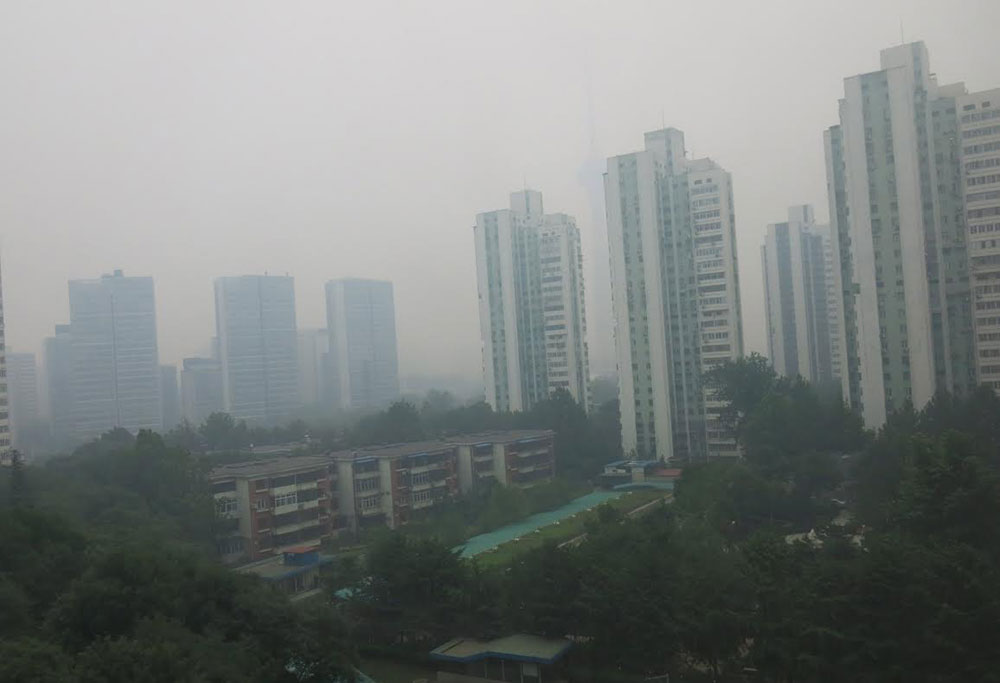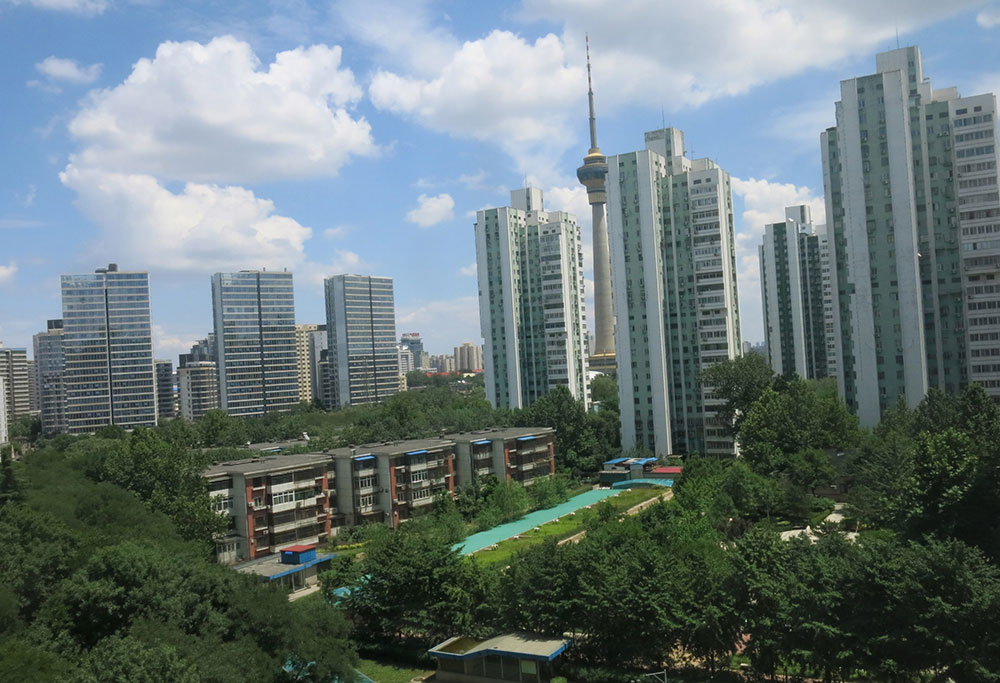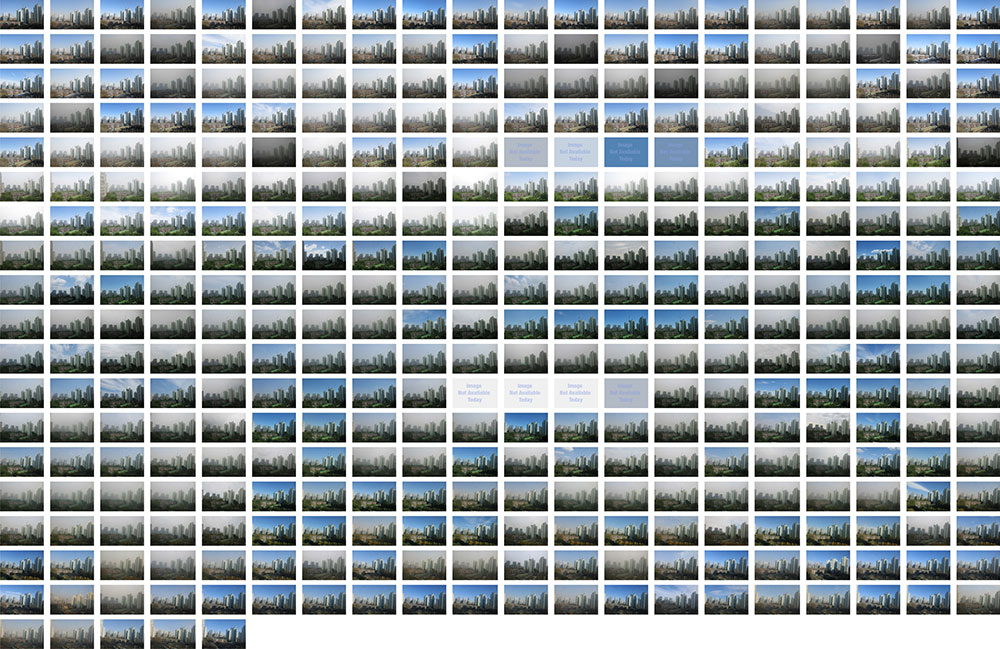In February, a Chinese celebrity journalist named Chai Jing released a video on the Internet about the damage air pollution was causing her country. During the week it was online (before Chinese censors pulled it down), people viewed the video 200 million times. Air pollution is perhaps on more Chinese minds than ever before. Awareness of the problem has been growing in recent years, and so has the number of tools available to track air pollution, from the U.S. Embassy’s hourly tweets from five Chinese cities, to iPhone apps that tell you in real time how pollution levels change in more than 100 cities, to our own China Air Daily which records a picture from Beijing, Shanghai, and Guangzhou every hour.
A contrast in air quality between two different days in Beijing, June 17 and June 23, 2015, with PM2.5 levels of 70 and 258, respectively.
Despite all the new tools available to track it, the pollution isn’t going away. And yet, Beijing air quality has improved, if marginally, over the past two years. I recently gathered all of the readings the U.S. Embassy has posted since 2008, when it began monitoring the air in Beijing for the tiny particles known as PM2.5. I graphed out the trend from 2009 to 2015 for the winter-spring season of January-May. May is the most recent month for which data is available from the U.S. Embassy for this year. The average PM2.5 level started off in 2009 at 81 micrograms per cubic meter—a level the United States Environmental Protection Agency describes as “moderate”—and then got worse, climbing to a height of 127 in 2013. In 2014, it improved marginally, to 123, but in 2015 it dropped to 74, the best score overall in this six year period. Why the dramatic improvement? Some attribute it to the weather. In 2015, so far, the wind has blown in the right direction, sweeping pollution out of the city. But some also attribute the clearer skies to anti-pollution measures by local government and industry.
Beijing Annual January-May PM2.5 Average (µg/m3)
United States Embassy
I have compiled a year’s worth of photographs of Beijing’s air, taken from a fixed camera in the western part of Beijing. There’s a lot of blue sky in this picture, especially in the latter half of the year. Some of these skies are “APEC Blue,” the term locals used to describe the pure color of the sky during the days when Beijing shut down its industry and gave most state employees a mandatory vacation in the lead-up to the international summit.
This represents a small victory, but one China’s leaders will have to work hard to maintain and improve. Still, Beijing often far exceeds the World Health Organization’s guidelines for healthy air—PM2.5 concentrations of 10 micrograms per cubic meter or less.
With Beijing surrounded by some of the country’s worst polluted cities, cleaning up the capital’s air isn’t just a local matter.
The map above comes from the China Air Quality app. Beijing’s PM2.5 measurement is listed at the top left with a reading of 119 (the United States Environmental Protection Agency considers PM2.5 at this level “unhealthy for sensitive groups”). Even when Beijing has a relatively clean day, its neighboring cities to the south, such as the industrial hubs of Shijiazhuang and Xingtai, all show readings at the maximum level of 500. (The Chinese government caps its PM2.5 readings at a maximum of 500 even though in reality the concentrations could be much higher.)
As Chai made clear in her documentary, it all comes down to regulation. Though she wasn’t the first to say that China has many environmental laws that lack proper enforcement powers, she was able to articulate this tangled web of complex inconvenient truths powerfully in her talk. Now we have to see how the lessons will be heeded.
From 2013 to 2015, we’ve seen a 40 percent reduction of PM2.5 concentrations in Beijing during the first five months of each year. In the coming years, Beijing residents want more. The question is: how soon will they see a change?






